The 28 Best Things to Do in Iceland, From Puffin Spotting to Bread Baking

Reinhard Pantke/Getty
Narrowing down the best things to do in Iceland isn't a simple task. Whether you've come for adventure or leisure (or both), this Nordic island has enough to fuel a lifetime of vacations—one of the many reasons I've visited the Land of Fire and Ice a dozen times over the last decade.
At 20 million years old, the small, New York–sized country of Iceland is Europe’s youngest island—and it’s still changing, given its placement on top of two actively moving tectonic plates. It’s a country with major range: Driving 30 minutes out of Reykjavik in any direction offers access to diverse landscapes that will have your head spinning. Fields of porous black rock, mountain valleys, subterranean caves with walls of lava, glaciers looming far off the road, and mysterious black sand beaches welcome everyone who makes the trek. There’s something magical about the never-ending playlist of weather that rains (or snows, or hails, or blows) down on the island, bringing you face to face with the natural elements—whether you like it or not. Locals have adopted a level of acceptance, never working against the elements and choosing to co-exist instead, a mindset us out-of-towners can learn a lot from.
A country with so much to offer can be hard to nail down in a single itinerary. As a self-proclaimed Iceland enthusiast, I did my best to sift through my own favorite stops to help you whittle down your own. Read on for ideas for short layovers, long-weekend adventures, weeks-long vacations, and more.
All listings featured in this story are independently selected by our editors. However, when you book something through our retail links, we may earn an affiliate commission.
Settle into a good read at the Nordic House
One of my favorite things to do when I first arrive in Reykjavik is to head to the Nordic House. Admittedly, it’s a bit of a walk from the downtown hub (at least 20 minutes, depending on the ever-changing weather) but this Alvar Aalto-designed community center houses a hidden gem. The library is not only an exhibit space showcasing some of the Finnish architect’s most iconic designs, but it’s a tranquil space to get your bearings before taking on the city. Don’t miss a snack at Sónó, which serves up vegetarian fare.
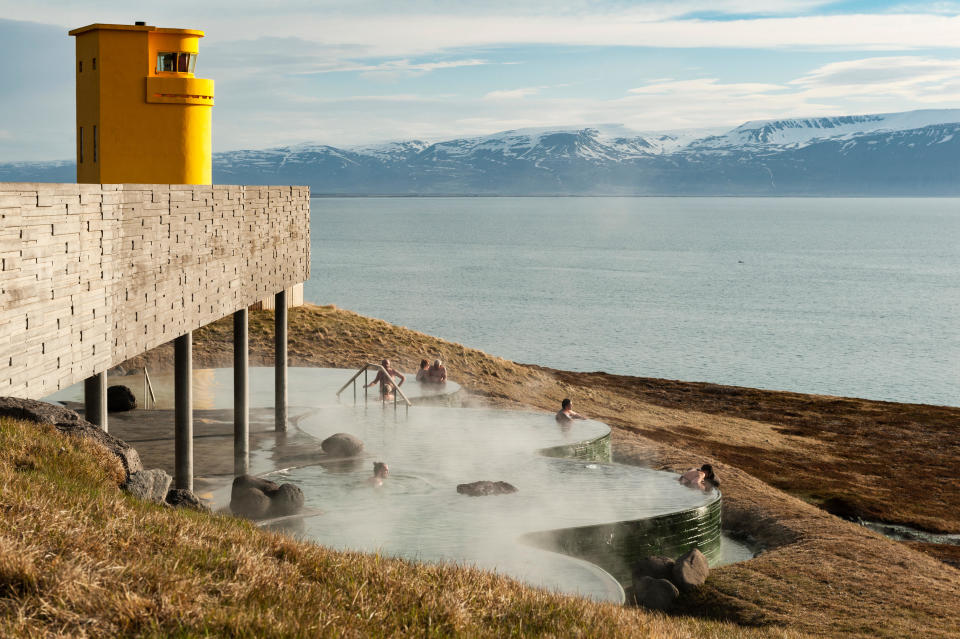
GeoSea geothermal sea baths, a beautiful new outdoor spa in Husavik, north Iceland, opened in August 2018. It overlooks Skjalfandafloi bay
Stop for a Soak at Geosea
If you find yourself in the northern city of Husavik—the best place to spot whales—make time for at least two visits to Geosea. Walking into this manmade hot spring is not entirely unlike walking onto a James Bond movie set. Located next to a quintessentially Nordic-looking lighthouse, the pools overlook the sea. There’s nothing more calming than grabbing a drink from the swim-up bar and watching the clouds fall over the distant mountain.
Get to know the creative community at DesignMarch
Fun fact: Despite its name, DesignMarch happens in late April or May. (In 2024, it’s taking place April 24-28.) During the annual design week, the city comes alive with creative spirit—galleries are open late, special exhibits draw visitors from around the world, and the annual DesignTalks spotlight some of the world’s most inspiring designers and artists. Experiencing this festival is like unlocking a secret level of a video game; the city is a thriving playground for creators and lively discourse.
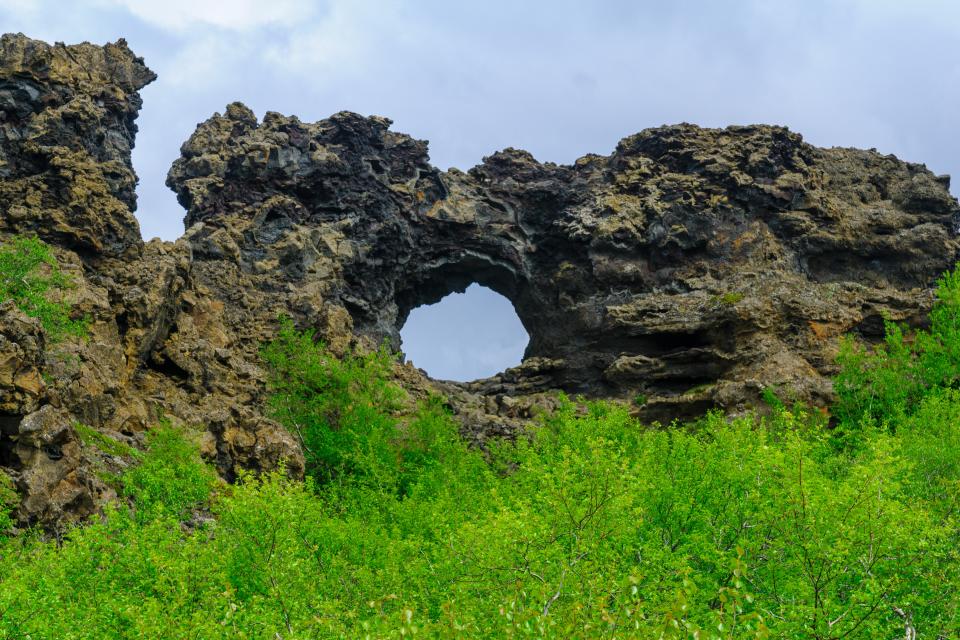
Dimmuborgir Volcanic Area
Hike Through Dimmuborgir
If you’ve ever heard about the Yule Lads—Iceland’s fictional 13 “Fathers of Christmas”—Dimmuborgir is the place that they call home. Located in the northern Myvatn region, this massive lava field is full of hulking rock formations with curious holes and waiting to be explored. There are several trail options: the 15-minute Small Circle, the 20-minute Big Circle, the 30-minute Mellönd Circle, the 40-minute Krókastígur, and the 60-minute Church Circle.
Climb Hverfjell Crater
While we’re talking about Dimmuborgir, it would be a crime not to mention Hverfjell Crater. Located north of the lava field, there’s a trail that will take hikers away from the rocks and toward a massive volcanic crater. Be warned: There are two ways to get to the top. There’s a well-trodden path that gently zig-zags to the top and a more strenuous walk with ropes to assist with the steep incline. When you exit the rocks of Dimmuborgir and first set eyes on the crater, the tougher route will be to your right and the other option is a bit of a walk to your left—there is also a set of bathrooms located at the bottom of the easier trail.

Book a Room at Highland Base — Kerlingarfjöll
The Icelandic Highlands are a notoriously tricky place to reach, and it’s usually recommended that you hire a guide to show you the sights. This part of the country is not often associated with luxury, but the Highland Base - Kerlingarfjöll has changed that. Built by the same people behind the Blue Lagoon, there’s a range of accommodations: a campsite, hostel, huts, lodges, and a hotel. The hotel is a masterclass in Scandinavian design manifested as wood-lined walls, moody lighting, and iconic furniture—but even the service house for the campsite feels upscale. And, of course, there are hot springs offering unbeatable views of the surrounding landscape.
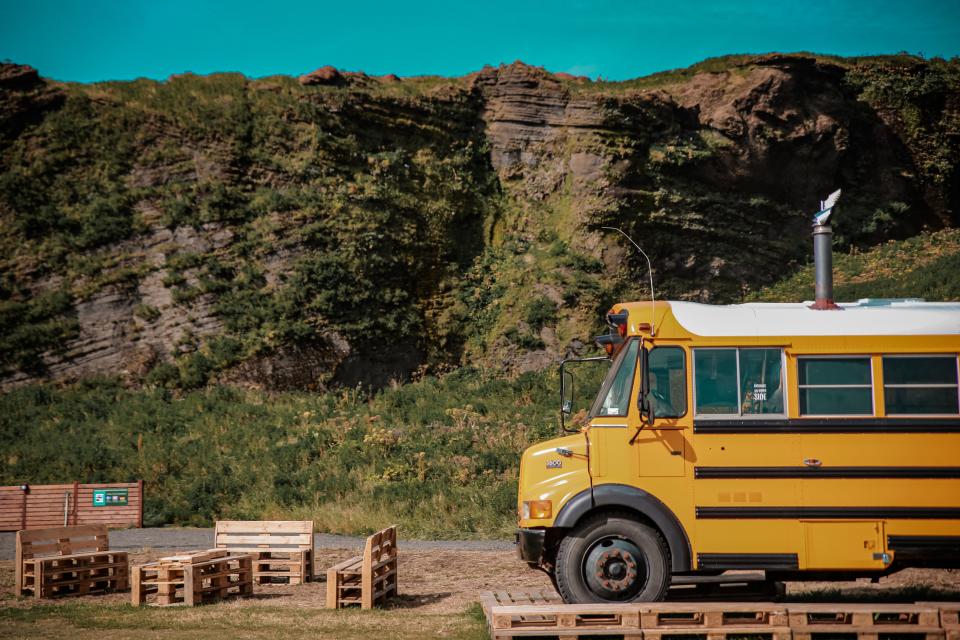
Caffeinate at Skool Beans
If you are making the trek to Reynisfjara—the instantly recognizable black sand beach along the southern coast—Skool Beans will be a welcome respite from the wind. You may be a bit confused at first sight, but roll with it. The micro-roaster and tea lab set up shop in 2020—inside of a school bus. Located a quick detour off Route 1 in Vik, warm up with a cup of coffee or hot chocolate while watching people pass by the bus window.
Start the day at Sundhöllin
Most first-time visitors will book it to one of the more Instagram-famous hot springs around the country, but I recommend everyone experience a local pool at least once. Sundhöllin is a great spot to do this for a few reasons. It’s really easy to get to, thanks to its prime downtown location. The architecture is striking—designed by Guðjón Samúelsson, it’s the oldest pool in the city dating back to 1937. And the best part? It costs less than $10 to get in (and kids under the age of 15 are free.) Locals tend to stop by before and/or after work to socialize, relax, and settle into the day.
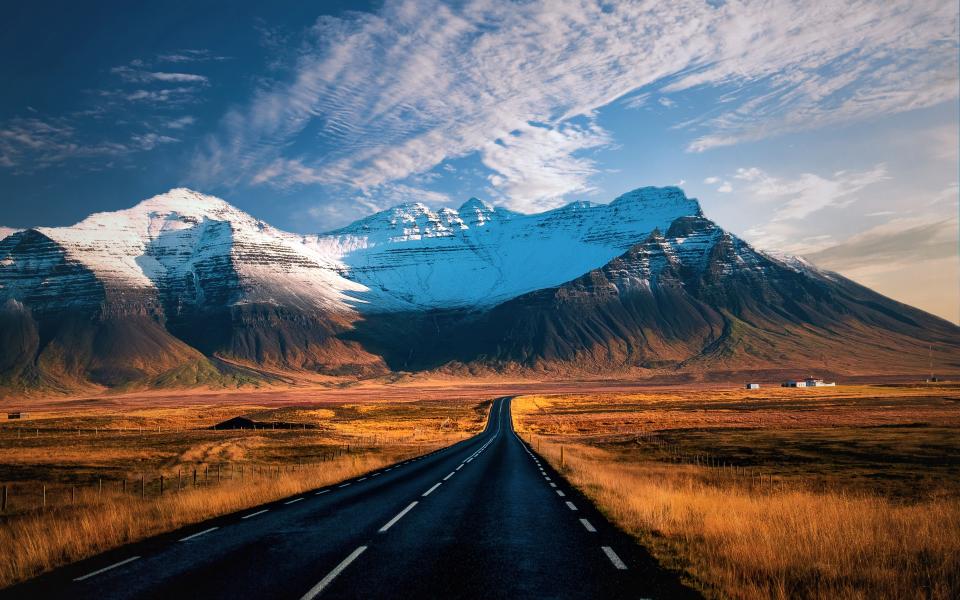
Ring Road
Drive the Ring Road
This is the classic Iceland road trip. The Ring Road spans 828 miles around the entire coastal region of the country. Driving this route, you'll have easy access to waterfalls, glaciers, geysers, hiking trails, lava fields, and hot springs. The best time to experience it is during the summer, when the weather is a bit more mild (meaning less snow and rain, but it’s always a possibility) and the 24-hour sun means you can drive late into the night.
Hike through the Vatnshellir lava tube cave
This is one activity you’ll need a guide for, since it’s easy to get lost or injure yourself inside the Vatnshellir lava tube cave. At 8,000 years old, the cave is known for its colorful walls, created by the lava that once coursed through its tunnels. Its location is particularly fantastic—it’s on Snaefellsnes Peninsula, which is home to so many other worthy sights, including Budirkirkja, an iconic church that’s painted black; Ytri-Tunga, a beach full of seals; Rauðfeldsgjá, a deep mountain rift you can hike through; and the quaint seaside village of Stykkisholmur.
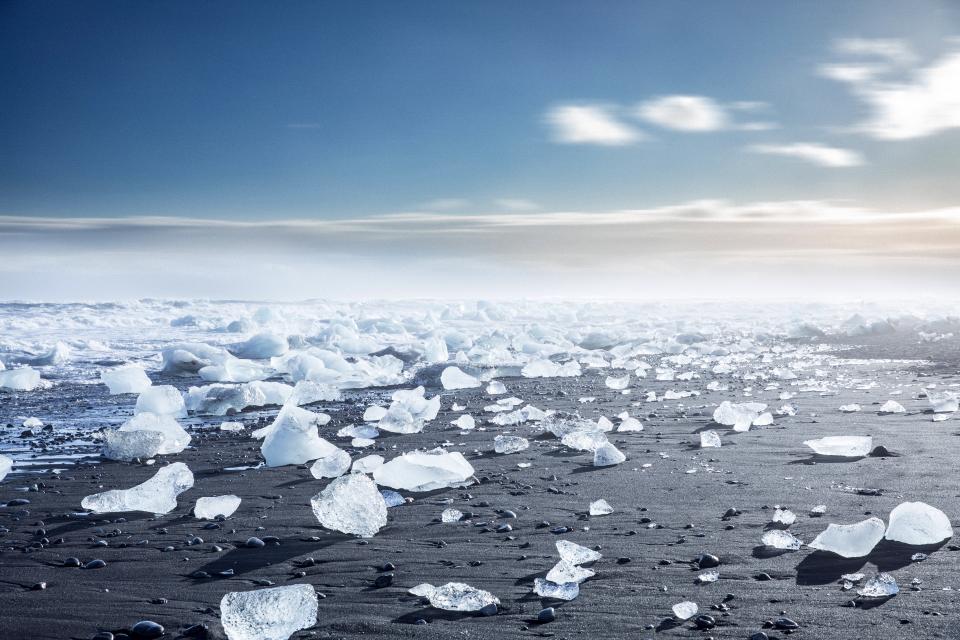
Jökulsárlón Lagoon
See icebergs up close at Jökulsárlón and Diamond Beach
Jökulsárlón and Diamond Beach are quintessential Iceland attractions for a reason; with that in mind, expect crowds. Located on the eastern corner of Iceland, they’re actually just across the street from one another. Jökulsárlón glacial lake is located behind a tall sand dune. Here, you’ll find massive pieces of ice that have broken off from the nearby Breiðamerkurjökull Glacier. At Diamond Beach, there are smaller ice chunks you can walk up to and touch—just be careful of the incoming waves. Catching the sunrise or sunset at either of these spots cannot be beat, especially if you fancy yourself a photographer.
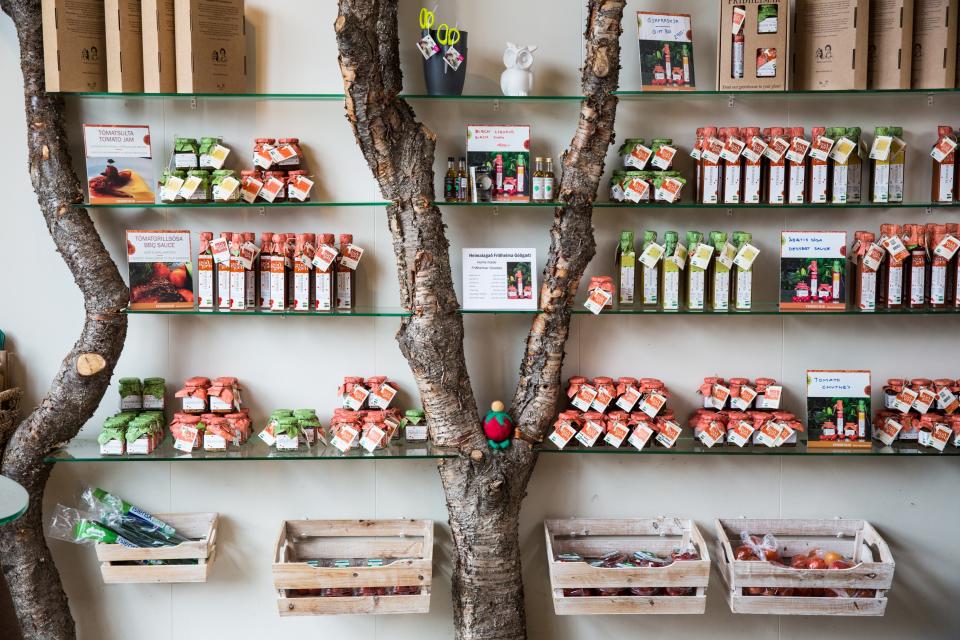
Feast on tomatoes at Friðheimar
About a 13-minute drive from the popular Secret Lagoon hot spring, you’ll find Friðheimar, a tomato farm that doubles as a restaurant and provides 40% of Iceland’s total tomato supply. The catch: You’ll only find tomato-themed items on the menu. From the wonderfully simple heirloom tomatoes with locally made burrata to the tomato schnapps (served in a hollowed-out tomato), the food at this greenhouse restaurant is an experience. If you’re staying in an Airbnb with a kitchen, bring home some tomatoes from the farm’s shop.
Stay at a bubble hotel
When it comes to accommodations in Iceland, Airbnb is often the easiest way to go. If you’re looking for a once-in-a-lifetime experience, however, check out the Five Million Star Hotel (or The Bubble Hotel, as it’s known locally). This “hotel” is a set of transparent bubble rooms in a wooded area near Reykholt in Southern Iceland. The land is owned by a friendly farmer, who will greet you upon arrival and introduce you to your home for the night. The bubbles are just private enough for changing into your pajamas, and there’s a communal building with bathrooms and a small kitchen available to all guests. Plus, it’s an incredible place to see the Northern Lights if you find yourself there during the wintertime. If you’re visiting during the Midnight Sun months instead, make sure to bring an eye mask for sleeping.
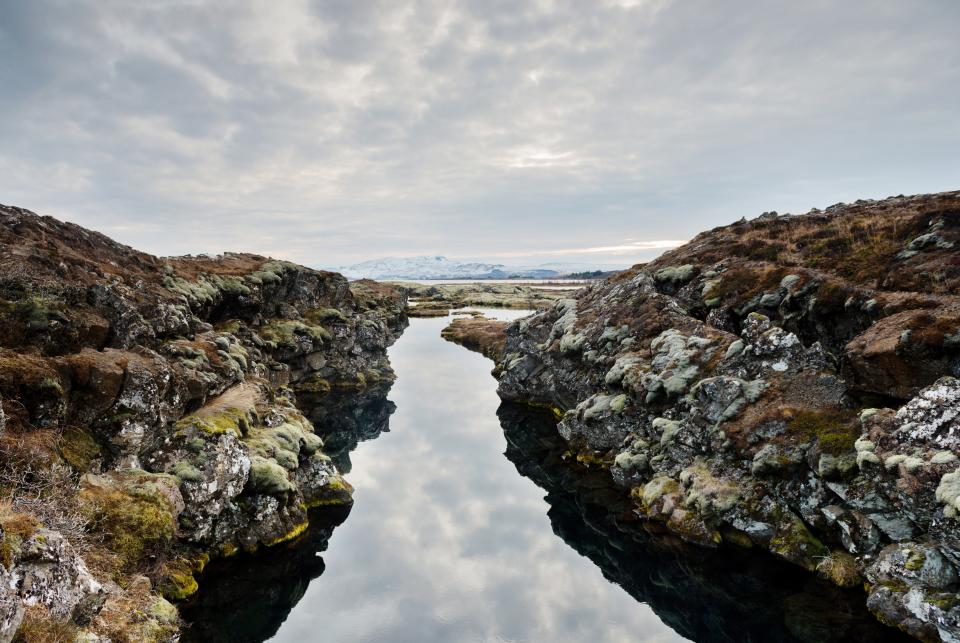
Silfra Fissure
Snorkel Silfra Fissure
One of the most interesting things about Iceland is its location on two tectonic plates that are moving away from each other at a rate of around two centimeters per year. Should you wish to explore the ever-expanding fissure, there’s a section of river in Þingvellir National Park where you can snorkel or scuba dive down into the crack. You have to go with a tour operator, as entry into the fissure can be dangerous, but check out Iceland Adventure Tours for a great experience. Your guide will take all the photos for you so you can just enjoy the scenery. And don’t worry: While the water stays a cool 34 degrees Fahrenheit, you’ll be comfortable in a dry suit.
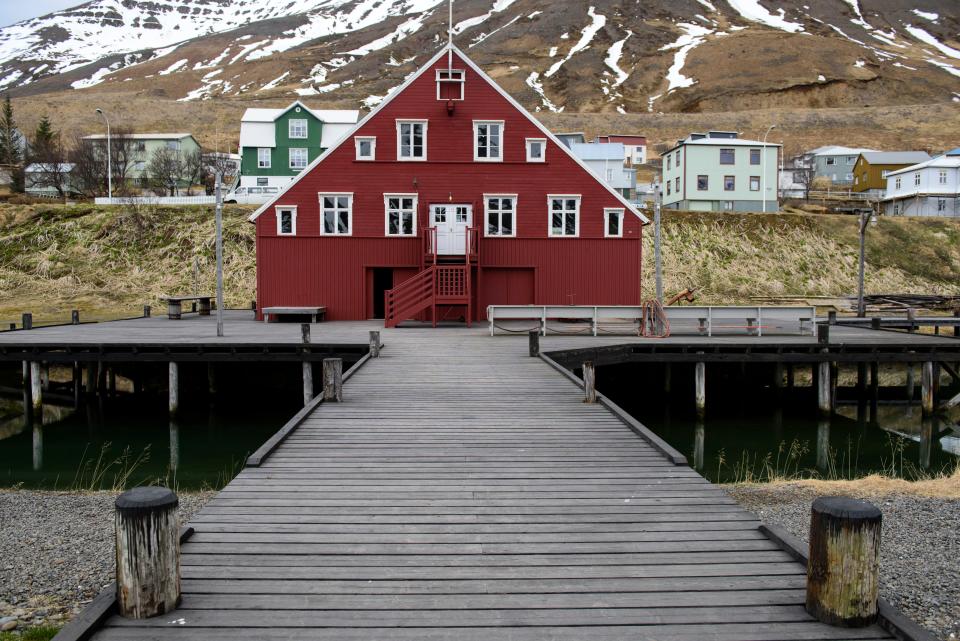
The Herring Era Museum of Siglufjördur, Northeastern Region, Iceland
Tour the Herring Era Museum in Siglufjörður
It’s easy to shrug off this three-building museum dedicated to the art of catching and distributing herring, but then you’d miss out on one of the more interesting educational moments you’ll find in northern Iceland. The Herring Era Museum breaks down everything you would ever want to know about the industry, including how the fish are caught, the consequences of overfishing, and the conflict between the locals and Norwegians who fish in Icelandic waters. One of the buildings, Róaldsbrakki, invites visitors to explore a traditional boarding home for women who worked in herring fishery that dates back to 1907. You can also walk through Grána, an example of what a small herring factory would have looked like in the early 1900s.
Explore the Arctic Coast Way
If battling fellow tourists along the Ring Road is not your idea of a vacation, consider the Arctic Coast Way route instead. At 470 miles long, the road trip comprises 21 villages and 4 islands and should take about a week to drive. It’s generally a bit less busy than the Ring Road and perfect for those looking to experience the smaller communities that give Iceland its character. Go whale watching in Husavík, hike in Fjörðurnar, and check out the wave catchers at Ólafsfjörður, which is considered one of the best places to surf under the Northern Lights.
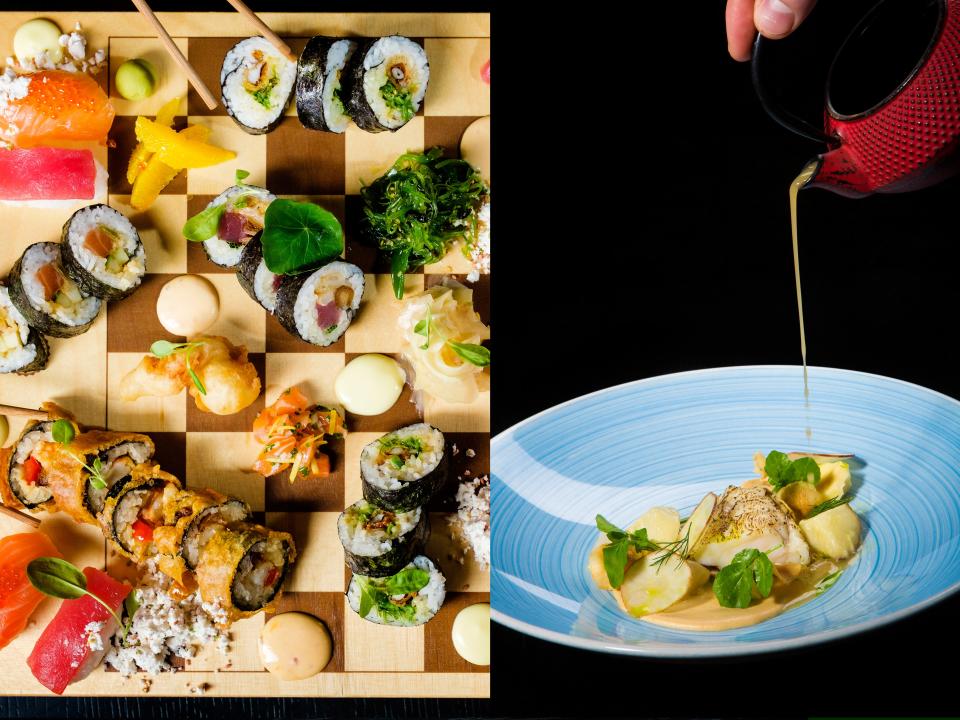
Dine on incredible seafood at Fiskfélagið
There are a lot of places you can have a delicious seafood dinner in Reykjavik, but Fiskfélagið is one of the best for its mix of fresh-from-the-boat fare and fine dining–level service. Known locally as Fish Company, the restaurant is a vehicle for chef Lárus Gunnar Jónasson’s creative dishes, which pair Icelandic fish like cod and salmon with international ingredients like Spanish chorizo, French truffles, Mexican chipotle, and American apples. Choosing your meal is a trip around the world in itself.
Learn about farm life at Bjarteyjarsandur
Go to Iceland between mid-May and mid-September and you’ll see sheep roaming all over the island. (There’s actually a law stating that farmers can release the animals in the summer months and that locals will help round them back up in September.) If you want to learn more about Iceland’s sheep—and how they contribute to the country’s booming agriculture industry—head to Bjarteyjarsandur. An hour’s drive north of Reykjavik, the family-run farm is a popular field trip destination for local schools, but adults will also love learning about the animals, from horses and sheep to rabbits and pigs. If you visit from October to April, you can even go digging for mussels on nearby shores.

Drangey Island, Iceland
Spot puffins on Drangey Island
You can’t visit Iceland during the summertime and not try to see puffins. These adorable birds can be tough to find though, since they prefer to make their nests on smaller islands off the main coast, like Drangey Island. There’s only one company that takes people there, aptly named Drangey Tours, and you’ll want to dedicate an entire afternoon to the excursion. After a 20-minute boat ride from Sauðárkrókur marina, you’ll set out for a steep hike. There are parts that require climbing a ladder and shimmying along a rock face, but once at the top, you’ll see puffins everywhere on the surrounding cliffs. You’ll also enjoy an incredible view of Skagafjordur, a fjord overlooking a bay in Northern Iceland that’s known for its hiking and bird-watching opportunities.
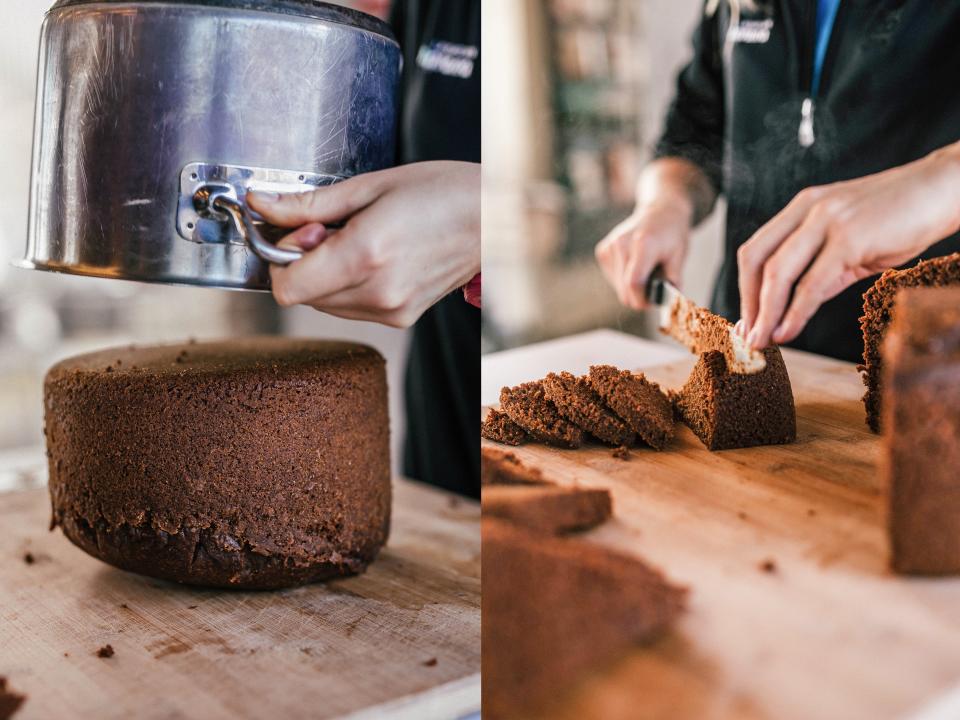
Bake bread underground at Fontana
Fontana is a geothermal spa with a beautiful pool overlooking þingvallavatn, a rift valley lake in þingvellir National Park (which is also home to famous sites like the Gullfoss waterfall and Geysir geothermal area). Here, you can enjoy the hot springs, then pay an extra fee to participate in the daily baking, which involves tapping geothermal energy from underground to make bread. For around $19, an employee will bring you out to the water’s edge with a shovel to dig up a bread tin that was buried there the prior day. Sweet and delicious, the bread tastes similar to pound cake, but looks like a loaf of rye. Try it topped with smjör (butter) and smoked trout from the lake, and be sure to buy some extra for the road.
Visit the sound domes above Seydisfjordur
A 15-minute hike from the Brimberg Fish Factory parking lot in the town of Seydisfjordur you’ll find Tvísöngur, a sculpture by German artist Lukas Kühne that honors Iceland’s unique tradition of five-tone harmony. Made from concrete, the artwork features five interconnected concrete domes, each designed to resonate at its own harmony as wind rushes through its arched opening. The effect is like a giant instrument playing itself.
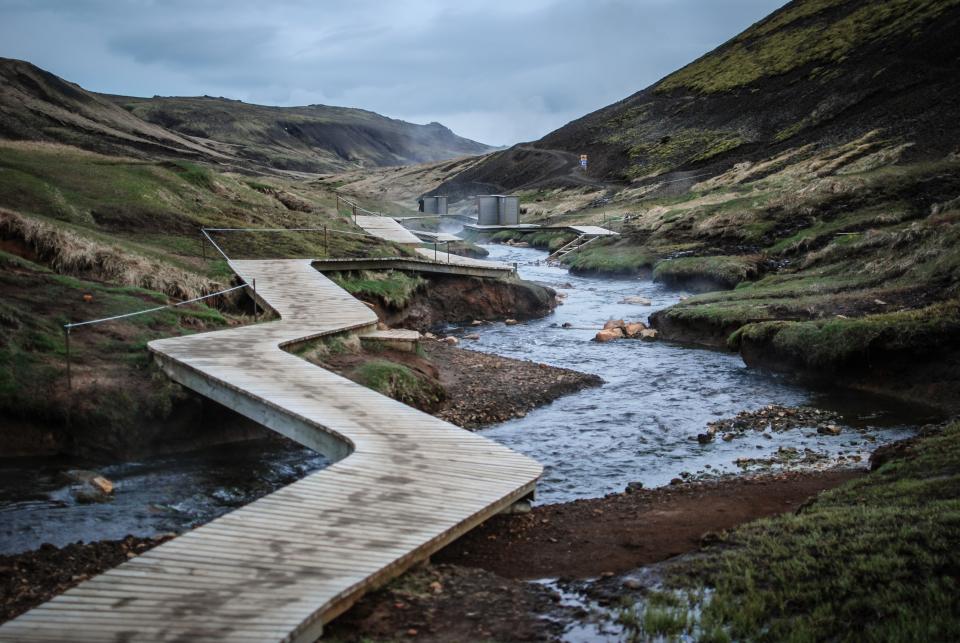
Reykjadalur Hot Spring River
Relax at Reykjadalur Hot Spring River
If you’re looking for a hike that ends in a hot spring session, head 50 minutes east of Reykjavik to the remote Reykjadalur Hot Spring River. You’ll start in a parking lot and follow a winding trail up a mountain, then down into a valley. The entire path is marked, though there are rocky sections here and there. After hitting a wooden bridge over some boiling mud pits (about a 30-minute walk from the parking lot), you’ll find the hot spring river. Take note that the water gets warmer the farther you go up the boardwalk.
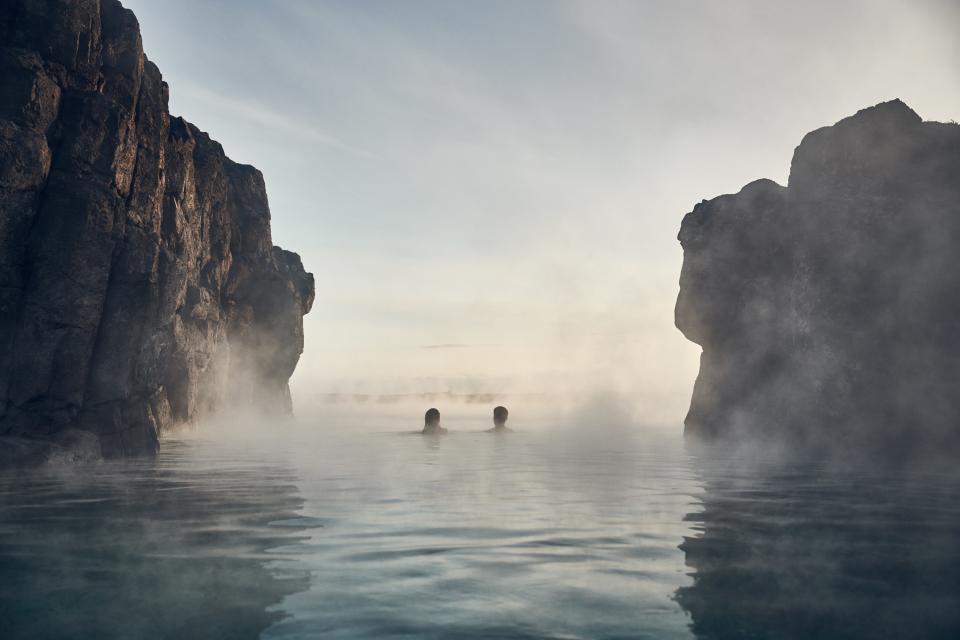
Indulge at Sky Lagoon
For a special treat, book the earliest time slot at Sky Lagoon—Reykjavik’s newest design-forward hot spring—on the day you arrive in Iceland. Most tourists will head to Blue Lagoon given its proximity to the airport, but if you can hop in the car (or on the bus), get to the city center, drop your luggage at your hotel or Airbnb, and make it to this beautiful hot spring first thing, well, there’s no better way to put yourself in the Iceland state of mind. Reserve a Sky Pass, which will grant you access to private changing rooms for a post-flight shower, plus the seven-step Ritual. After a soak in the hot springs, a dip in the cold pool, a visit to the sauna (with breathtaking views of the hot spring), a walk through cold mist, an exfoliating body scrub, time in the steam room, and a cool rinse, you’ll forget all about that red-eye flight.
Soak among the trees at Forest Lagoon
Iceland’s newest place to relax with a view, Forest Lagoon is located right outside the northern city of Akureyri and features a slightly unusual natural feature for the area: lots of trees. Designed by Reykjavik-based Basalt Architects, the hot spring also boasts thoughtful elements like built-in tables and benches (all the easier for sipping your drinks from the swim-up bar), as well as a cold pool and a river-like section with higher temps.
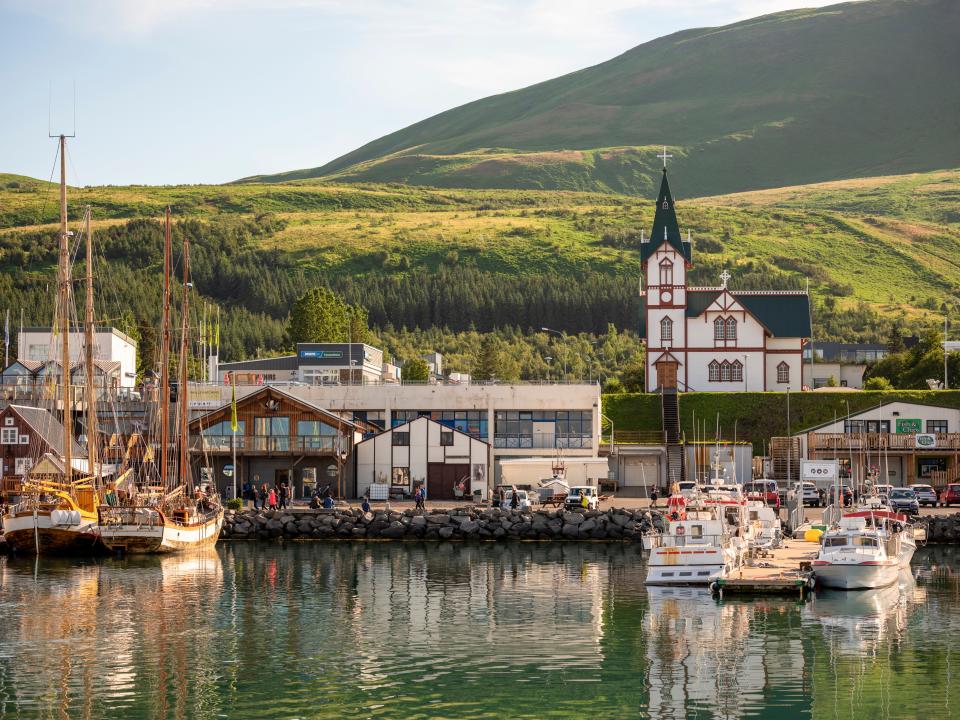
Harbor at Skjálfandi Bay, Husavik, Northeastern Region, Iceland
Enjoy an aerial view with Zipline Iceland
Hiking, kayaking, biking, and camping are all traditional outdoor activities in Iceland. More recently, however, zip-lining has emerged as a popular way to experience the landscape. Located near Vik in southern Iceland, Zipline Iceland offers four different lines. The only catch is you have to hike through a stunning canyon to get there, of course.
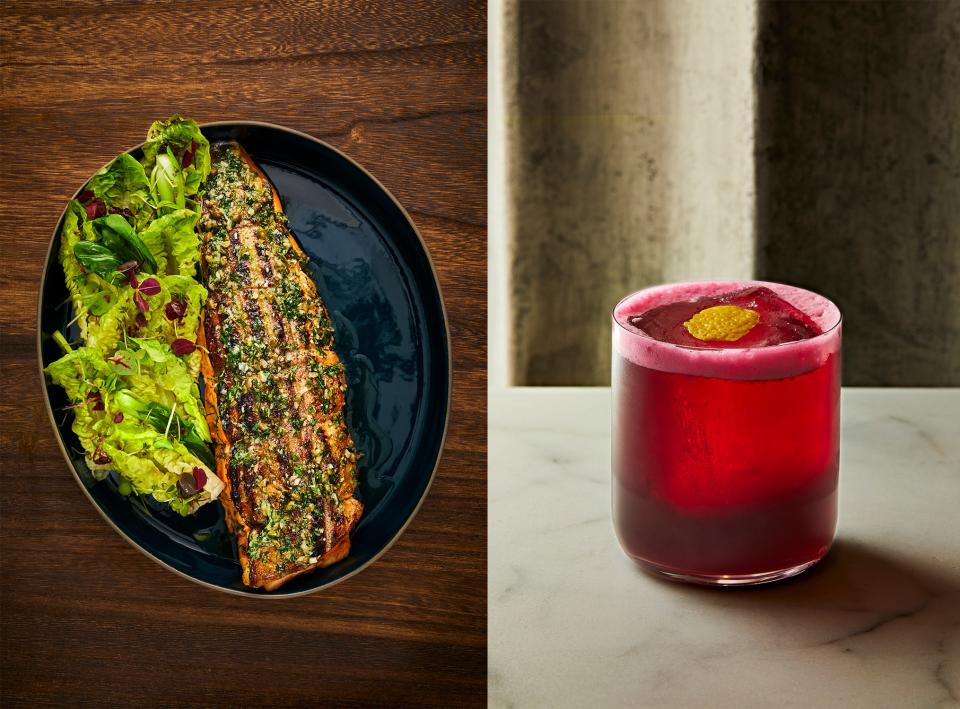
Treat yourself to drinks and dinner at Tides
New-ish to the Reykjavik food scene, Tides in the EDITION hotel serves up some next-level mocktails (and food, of course). I hosted my own wedding dinner at the restaurant, and my partner was blown away by the detail in the non-alcoholic drink options. The menu favors local ingredients and changes regularly, meaning you’ll always discover something new to love. And if you find yourself nearby in the morning hours, check out the Tides Café, where you can enjoy a pastry and coffee in the cozy breakfast nook. Long gone are the days when Reykjavik wasn’t known as a food city.
Step back in architectural time at Glaumbær
Iceland’s famous turf houses are historic structures, constructed hundreds of years ago with soil, stone, wood, and grass. To learn more about them, plan a trip to Glaumbær Farm, an open-air museum where you can walk through all the buildings to discover their purpose. Here, the grass-covered homes date back to the mid-18th century and tell the story of life on Iceland at that time.
Pick up a new scent at Fischer
There are plenty of places to shop in Reykjavik, but Fischer is a hidden gem on a quiet street. Once a recording studio, the space now functions as a perfumery, run by Sigur Rós frontman Jónsi and his family. Focused on scents for all genders, the store also sells skin- and haircare products, and features a downstairs gallery with local art exhibits. Even if you’re not looking for a new scent, it’s worth a visit to soak in the calming vibes.
Originally Appeared on Condé Nast Traveler

 Yahoo Finance
Yahoo Finance 